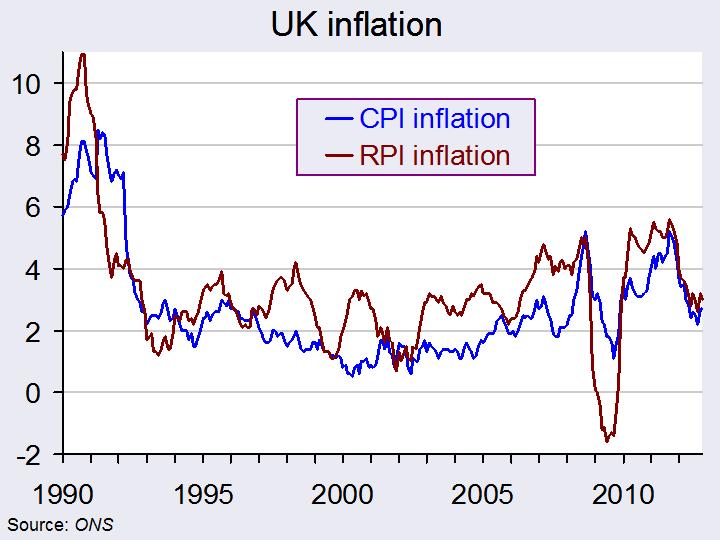 GDP figures are often a poor measure of a country’s economic well-being. By focusing on production, they may not capture the contribution of a range of social and environmental factors to people’s living standards, including the various negative and positive externalities from production and consumption themselves. A case in point is internet innovation: an issue considered in the first linked article below by the eminent economist, Joseph Stiglitz.
GDP figures are often a poor measure of a country’s economic well-being. By focusing on production, they may not capture the contribution of a range of social and environmental factors to people’s living standards, including the various negative and positive externalities from production and consumption themselves. A case in point is internet innovation: an issue considered in the first linked article below by the eminent economist, Joseph Stiglitz.
The effects of innovations that directly lead to an increase in output are relatively easy to measure. Many innovations, however, may allow those with power to consolidate that power, resulting in less competition and a possible decline in welfare. If, for example, companies such as Amazon, invest in online retailing and gain a first-mover advantage, they may be able to use this power to drive out competitors. In other words, innovations may not simply lower the cost of production and hence prices: they may even lead to an increase in prices.
Then there are innovations, such as faster broadband, that result in higher quality. While higher quality in one sphere may lead to higher output elsewhere, in many cases it is just improving the experience of consumers without being reflected in a way that can be easily measured.
Some innovations may be judged as socially harmful. Thus improved gaming functionality and realism may encourage people to spend more time online. The social and health implications of this may be considered as undesirable and resulting in a reduction in well-being. Of course, many gamers would disagree!
The point is that technological innovations often result in a change in tastes. These changes in tastes may involve negative externalities, themselves very hard to quantify. Consequently,  resulting changes to GDP may be a very poor indicator of changes in social well-being.
resulting changes to GDP may be a very poor indicator of changes in social well-being.
The articles below consider some of these issues. The Stiglitz article gives an example of innovation in financial services. Although highly profitable for many working in the sector – at least until the crash of 2008/9 – according to the author, these innovations led to both lower GDP growth and a net contribution to social welfare that was negative.
The benefits of internet innovation are hard to spot in GDP statistics The Guardian, Joseph Stiglitz (10/3/14)
Economist argues for happiness over GDP Yale Daily News, Joyce Guo (19/2/14)
‘GDP: A Brief But Affectionate History’ by Diane Coyle and ‘The Leading Indicators: A Short History of the Numbers That Rule Our World’ by Zachary Karabell Washington Post, Tyler Cowen (21/2/14)
Emerging Markets: Income Returns To Innovation (GDP Per Capita Vs. Innovation Index) Seeking Alphz, Jon Harrison (4/3/14)
Questions
- What does GDP measure?
- What factors affecting the welfare of society are not measured in GDP?
- What alternative indicators are there to GDP as a measure of living standards?
- How would you set about measuring the effects on living standards of a technological revolution, such as the ability to access 4G on the move on laptops and smartphones (e.g. on trains)?
- How should the net benefits of installing more ATMs (cash machines) be calculated?
- Revisit the blog Time to leave GDP behind? and answer question 8.
- Referring to the Jon Harrison article, how would you construct an innovation index? How is innovation related too GDP per capita?
 Inflation is a key macroeconomic variable and governments typically aim for both low and stable rates of inflation. In the UK there are two main measures of the rate of inflation in the UK – the CPI and the RPI. Over the past few years there has been a growing gap between the two measures and this has led to consultations about how the RPI could be adapted to allow it to rise more slowly in the future. (Click here for a PowerPoint of the chart.)
Inflation is a key macroeconomic variable and governments typically aim for both low and stable rates of inflation. In the UK there are two main measures of the rate of inflation in the UK – the CPI and the RPI. Over the past few years there has been a growing gap between the two measures and this has led to consultations about how the RPI could be adapted to allow it to rise more slowly in the future. (Click here for a PowerPoint of the chart.)
The RPI and CPI measure inflation in different ways – they don’t measure the same basket of goods. The RPI measure includes the costs of housing, whereas the CPI does not include this. Furthermore, the RPI is an arithmetic mean and the CPI is a geometric mean, which will be lower than the arithmetic mean. The ONS says that a key advantage of using the geometric mean (i.e. the CPI) is that:
…it can better reflect changes in consumer spending patterns relative to changes in the price of goods and services.
Typically the RPI has been about 1% higher than the CPI and governments can benefit from this by linking state benefits to the CPI (the lower rate) and payments they receive to the RPI, thus maximising the difference between earnings and expenditure.
However, the gap between these two measures of inflation has been growing and this has been causing concern for the ONS and the Office for Budget Responsibility (OBR). This has led to the consultative process regarding making changes to the RPI. However, any change made to the RPI would put certain groups at a disadvantage. One such group is pensioners – many pensioners in the private sector have their pensions linked to the RPI and if a change were made to bring it more in line with the CPI (i.e. lower it) they would suffer. Ros Altman, director general of SAGA said:
After 30 years of retirement, someone who receives 0.6% lower inflation uprating will end up with a pension nearly 20% lower…Therefore, over time, pensioners will be able to afford less and less and pensioner poverty will increase once again.
There would be some beneficiaries of any change to the RPI – the government would benefit in some areas; company pension schemes might also see gains made; some students might benefit and even rail travellers.
An announcement was made by the National Statistician, Jil Matheson, on the 10 January. Much to the surprise of most experts, she has decided to keep the RPI measure unchanged. She did recommend, however, that a new index be introduced that would be published alongside RPI and CPI. The new index would better meet international standards.
The following articles look at the arguments for and against changing the RPI measure.
Articles prior to announcement
Pensioner backlash expected over pension reform The Telegraph, Philip Aldrick (9/1/13)
Inflation: Changes to the calculation of RPI expected BBC News (9/1/13)
RPI review ‘may hit pensioners’ Express and Star (9/1/13)
Q&A: Inflation changes BBC News (9/1/13)
Pension holders and savers: beware of an RPI inflation change The Economic Voice (9/1/13)
Pensioners and savers face ‘stealth attack’ on their income from change to the inflation index Mail Online (9/1/13)
Articles following announcement
Relief for pensions as ONS says leave RPI unchanged The Telegraph (10/1/13)
RPI review recommends new inflation index The Guardian (10/1/13)
Inflation: No change to RPI calculation BBC News, 10/1/13)
The ONS puts consistency first BBC News, Stephanie Flanders (10/1/13)
Q&A: Inflation changes BBC News (10/1/13)
Announcement by National Statistician
National Statistician announces outcome of consultation on RPI ONS (10/1/13)
Questions
- How are the RPI and CPI measured?
- Why is the RPI typically higher than the CPI?
- What changes to the RPI were suggested? What are the advantages and disadvantages of each?
- Who would have benefited from each of the proposed changes to the RPI?
- Who would have suffered from each of the proposed changes to the RPI?
- Why has there been a growing divergence between the two measures of inflation?
- Do interest rates affect the RPI and CPI measures of inflation to the same extent?
- Which measure of inflation is used for the Bank of England’s inflation target? Has it always been the measure used?
 GDP figures are often a poor measure of a country’s economic well-being. By focusing on production, they may not capture the contribution of a range of social and environmental factors to people’s living standards, including the various negative and positive externalities from production and consumption themselves. A case in point is internet innovation: an issue considered in the first linked article below by the eminent economist, Joseph Stiglitz.
GDP figures are often a poor measure of a country’s economic well-being. By focusing on production, they may not capture the contribution of a range of social and environmental factors to people’s living standards, including the various negative and positive externalities from production and consumption themselves. A case in point is internet innovation: an issue considered in the first linked article below by the eminent economist, Joseph Stiglitz. resulting changes to GDP may be a very poor indicator of changes in social well-being.
resulting changes to GDP may be a very poor indicator of changes in social well-being.